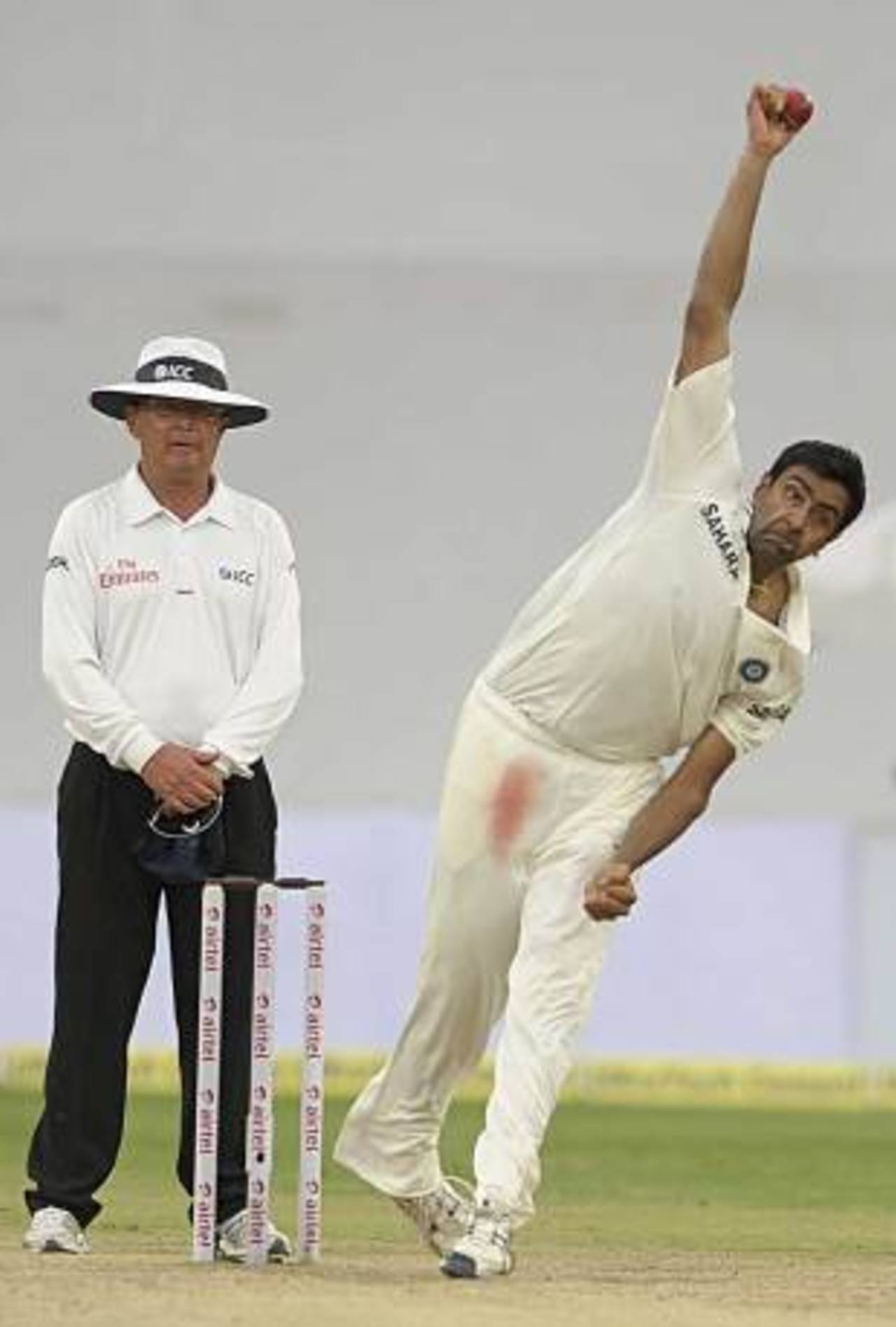At 3.30pm, with a minimum of 13 overs to go in
the day, the final drinks break was called for. The India team gathered around in the one part of the field that provided them shade, with a stand coming between them and the setting sun. They all sat down, and rested for a good six minutes. It was an instructive image.
The over-rate wasn't a worry for them, so there was no one asking them to hurry up. They had been in the field for 189.2 overs (202.2 by stumps) after having enforced the follow-on.
R Ashwin had bowled 48.2 overs (52.2 by stumps) without a wicket. They were bowling to a batsman in Alastair Cook playing - for the match state and the scale of it, if nothing else - one of the best Test innings played by a batsman visiting India. The pitch had slowed down, England had become more used to the conditions - less panicky, more sure with their footwork - and it was hard to imagine where the next wicket would come from.
From the time the ball refused to bounce rib high on day one, India would have known they would have to go through such a day, when they would need to stick to their disciplines and work hard for their wickets. There wouldn't be many flying off the shoulder of the bat to short leg, and the turn would be slow enough to let the batsmen recover even when beaten in the flight. India worked pretty hard for them in the first two sessions, and were gifted two too: one by Kevin Pietersen and another by Tony Hill.
Pragyan Ojha continued to make use of the pitch, Zaheer Khan showed good skill in the morning, and most encouragingly
Umesh Yadav ran in hard and bowled fast reverse swing on a pitch where England bowlers hovered around 130kmph. Yadav acknowledged the pitch was becoming flatter every passing minute, and that it called for a lot of effort to extract life out of it. Even at his pace, he said, he had to bowl in certain areas to get the ball to carry some. He said on such a pitch you needed to put in all your effort and wait also for the batsmen to make a mistake. Those mistakes weren't forthcoming.
India are still ahead in the game but they know if England bat another 45 overs on day five they will have a tricky chase on their hands, with one of their openers not allowed to bat in the top six unless Cook allows him. Gautam Gambhir has been away after his grandmother, whom he absolutely adored, died during the Test. He is expected to be back on Monday morning, and it is hard to question his absence.
The obvious question after a hard day that yielded five wickets will be what India could have done differently. You won't find many different answers. Possibly Ashwin could have been more patient. He tried too many variations: his carrom ball always started too straight, the mystery ball was too obvious and never came out right, and he even tried to run in like a left-arm spinner. As expected, Ashwin won't give you a pitch map as concentrated as Ojha's. He tries a lot of things when bowling, and when you have the discipline of Ojha at the other end, you can afford him to do so.
That's all good when you are getting the wickets, but perhaps when the batsmen are settled you need him to do the other, dirty job too. Sanjay Manjrekar made an interesting observation, citing from his playing days both in Test and domestic cricket, about how they used to get batsmen in driving mode by pitching up to them for overs on end and plugging the straight field with mid-off, cover, mid-on and straight midwicket. That's when, with the batsmen used to driving, the variation becomes more effective, especially on a slow and low pitch where the batsman can hang back. India didn't do that.
You also wonder if - when getting up from their final drinks break or at any other point during the match - even for a fleeting moment India thought of what would have been if there had been DRS. This is to not reignite a tired debate that won't go anywhere until the ICC takes ownership of the concept. This is not to highlight that Cook was reprieved when on 41.
This is only to imagine DRS in a purely tactical sense. Forget the tangible results: there have been some plumb lbws off spinners turned down, and two not-outs off quicks given. The absence of DRS has left the umpires more conservative than they have been since the introduction of DRS. That is a big difference between England facing Saeed Ajmal and Abdur Rehman in the UAE and England facing Ojha and Ashwin in India. Pakistan got 22 lbws in that three-match series. Only three of them came through reviews, but it cannot be denied that the umpires felt empowered enough to go with the bowlers on marginal calls.
It is out of question that India would have gone for DRS just for this tactical use. Nor will they be regretting it, but its absence has levelled the playing field a little.
